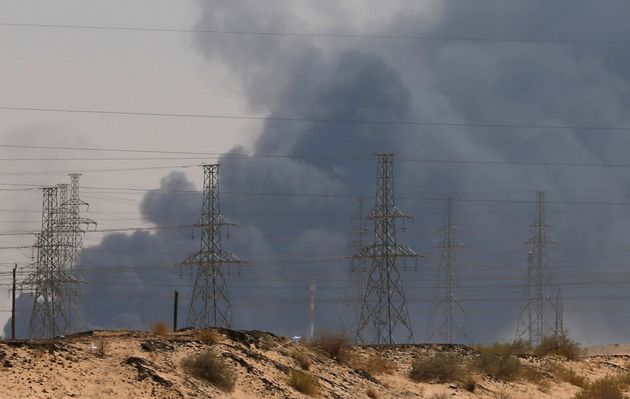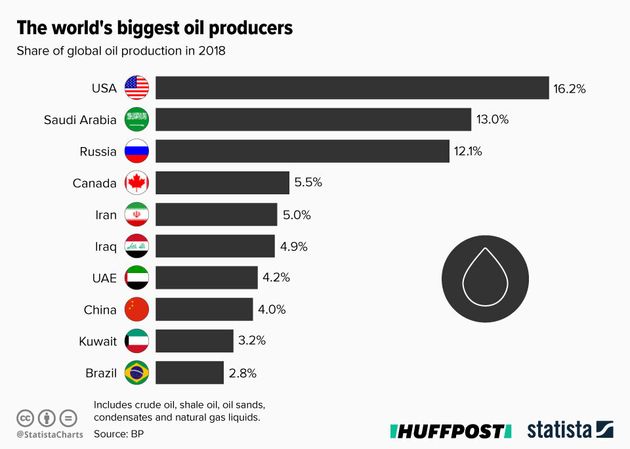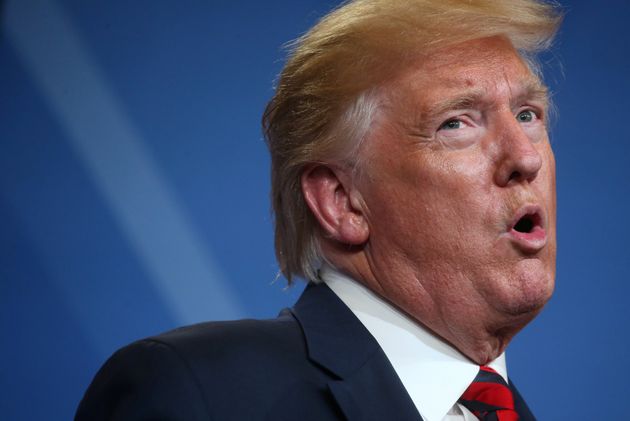
Unless you’re some kind of Texas oil tycoon, you probably didn’t notice oil prices sky-rocket over the weekend.
But you might have seen this tweet from Donald Trump: “Saudi Arabia oil supply was attacked.
“There is reason to believe that we know the culprit, are locked and loaded depending on verification, but are waiting to hear from the Kingdom as to who they believe was the cause of this attack, and under what terms we would proceed.”
“Locked and loaded?” Crickey. So, what the hell happened to Saudi Arabia’s oil facilities – and why is Donald Trump so interested?
Here’s What Happened

Saudi Arabia is the world’s biggest exporter of oil. But on Saturday, there was a serious drone attack on two major oil processing facilities in the country – one in Abqaiq, the world’s biggest petroleum-processing plant, and one in Khurais.
Satellite images of the scene suggest serious damage to the Abqaiq facility, with black char marks seen at the heart of the plant.
The attack has reportedly knocked out around 5% of the world’s oil supply and cut output from the facilities by 5.7 million barrels per day.
According to the BBC, Saudi Arabia usually ships more than 7 million barrels out of the country each day.

The country has remained tight-lipped about the extent of the damage, other than to say there were no casualties. However, it is expected to be weeks before it is back at its full oil capacity.
All of this means that oil prices have soared by almost 20%, with Brent crude – the international benchmark used by traders – jumping to $71.95 a barrel. It represents the biggest jump in prices within a day since the Gulf War in 1991.
Why Is Donald Trump “Locked And Loaded”?

The US has accused Iran of carrying out the attacks, with the country’s Secretary of State Mike Pompeo accusing Tehran of launching “an unprecedented attack on the world’s energy supply”.
Iran has denied being involved, calling the accusations “pointless”.
The row comes amid already-high tensions between the two countries over Iran’s nuclear programme, with the United States imposing sweeping sanctions on the country over the initiative.
Richard Nephew, a programme director at Columbia University’s Center on Global Energy Policy, said if Iran was responsible for the attack, it may be as retribution for American sanctions.
“They are making decisions about whether and how to respond to what they see as a massive attack on their interests from the US via sanctions by attacking US interests in turn, and those of US partners they believe are responsible for US policy,” he said.
Meanwhile, Yemeni Houthi rebels have claimed responsibility for the attack. A Saudi-led coalition has been battling the Houthis for more than four years in a conflict which is widely seen as a proxy war between Saudi Arabia and Shi’ite Muslim rival Iran.
But Pompeo said there was no evidence the attack came from Yemen.
What Does This Mean For Prices At The Pumps?
At the moment, it’s probably too early to know whether the attacks will lead to a rise in petrol prices for consumers – any spike could take weeks to trickle down to the pumps.
Saudi Arabia said it would try and compensate for the damage to its oil processing facilities by drawing on its stocks, which stood at 188 million barrels in June.
Meanwhile, Trump said he had authorised the release of US oil reserves in order to keep the markets “well-supplied”.

